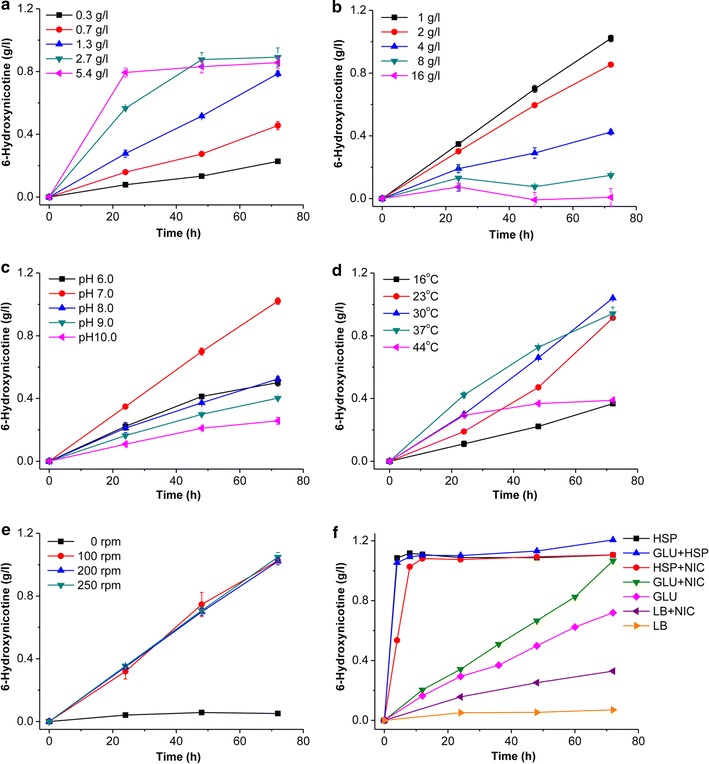Fig. 6.

Optimization of biotransformation conditions to produce 6-hydroxynicotine. Effects of the amount of the catalyst added (dry cell weight, DCW) (a), the initial concentration of nicotine (b), pH (c), temperature (d), rotation speed (e), and the media used for preparation of the biocatalyst (f). In panel c: 50 mM sodium phosphate buffer (pH 6.0 and pH 7.0), 50 mM Tris–HCl buffer (pH 8.0), and 50 mM glycine–NaOH buffer (pH 9.0 and pH 10.0) were used. In panel f: HSP, HSP medium; GLU + HSP, glucose–ammonium–HSP medium; HSP + NIC, HSP-nicotine medium; GLU + NIC, glucose–ammonium–nicotine medium; GLU, glucose–ammonium medium; LB + NIC, LB-nicotine medium; LB, lysogeny broth. The reactions were carried out at 30 °C in 50 mM sodium phosphate buffer (pH 7.0) with 1.0 g L−1 nicotine as the substrate and ~ 1.5 g L−1 DCW whole cells of A. tumefaciens S33-∆hno, or as indicated
